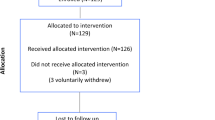Abstract
Purpose
Locally advanced, fungating breast cancer is a distressing condition that is frequently seen worldwide. Radiation is particularly useful in reducing the associated symptoms such as discharge, bleeding and pain. However, there is surprisingly limited data regarding the efficacy of radiation in controlling symptoms in patients with this condition.
Methods and materials
Records of 35 patients with fungating breast cancer were retrospectively reviewed. Study end points included tumor and symptom response (including response rates, duration of response), median survival, and treatment toxicity, which was scored using the Common Toxicity Criteria v3.0. To investigate for a dose-response relationship, patients were divided into two subgroups using the median biological effective dose (BED) of radiation. Patients in the higher BED subgroup (40 Gy10 or greater) were compared to those in the lower BED group (less than 40 Gy10) using the Fisher’s exact test.
Results
Median age was 59 years (range 40–91 years). Thirty-two patients (91 %) had tumor size larger than 5 cm and nine patients (26 %) had known distant metastatic disease at the time of treatment. Dose-fractionation regimen ranged from 20 Gy in 5 fractions to 65 Gy in 26 fractions. Median survival was 11.7 months. Actuarial 12-month survival was 58 %. There was no difference between the high-dose and the low-dose groups, and higher radiation dose was not found to be associated with a longer duration of palliation or survival. No patients experienced grade 3 or 4 toxicity.
Conclusion
Radiotherapy is effective palliative treatment for patients with fungating breast cancer. High response rates of up to 90 % can be expected, with a median local progression-free survival of 10 months. With the advent of dose escalation techniques such as intensity-modulated radiation therapy (IMRT) and volumetric modulated arc therapy (VMAT), it is now technically possible to deliver high radiation doses to patients with low toxicity and risk to the adjacent normal organs. Nevertheless, whether higher doses or longer courses of radiotherapy confer better local control is a potential subject for further study.



Similar content being viewed by others
References
Arriagada R et al (1985) Radiotherapy alone in breast cancer. I. Analysis of tumor parameters, tumor dose and local control: the experience of the Gustave-Roussy Institute and the Princess Margaret hospital. Int J Radiat Oncol Biol Phys 11(10):1751–1757
Arriagada R et al (1993) Radiotherapy alone in breast cancer: analysis of tumor parameters, tumor and lymph node doses, lymph node control, distant metastasis, and survival rates—the experience of the Gustave-Roussy institute and the Princess Margaret hospital. Radiat Oncol Investig 1(1):63–70
Borger JH et al (1992) Primary radiotherapy of breast cancer: treatment results in locally advanced breast cancer and in operable patients selected by positive axillary apex biopsy. Radiother Oncol 25(1):1–11
Chu AM et al (1984) Non-metastatic locally advanced cancer of the breast treated with radiation. Int J Radiat Oncol Biol Phys 10(12):2299–2304
Levenne MB et al (1977) Treatment of carcinoma of the breast by radiation therapy. Cancer 39(6 Suppl):2840–2845
Puthwala AA et al (1984) Combined external and interstitial irradiation in the treatment of stage III breast cancer. Radiology 153(3):813–816
Bedwinek J et al (1982) Stage III and localized stage IV breast cancer: irradiation alone vs irradiation plus surgery. Int J Radiat Oncol Biol Phys 8(1):31–36
Author information
Authors and Affiliations
Corresponding author
Ethics declarations
Funding
No funding was received for this study.
Conflict of interest
The authors declare that they have no conflict of interest.
Ethical approval
This study has been approved under the National Healthcare Group (NHG Singapore) Institutional Review Board.
All human studies have been approved by the appropriate ethics committee and have therefore been performed in accordance with the ethical standards laid down in the 1964 Declaration of Helsinki and its later amendments. All procedures followed were in accordance with the ethical standards of the responsible committee on human experimentation (institutional and national) and with the Helsinki Declaration of 1975, as revised in 2008.
Informed consent
Informed consent was unavailable as all patients involved in this retrospective study are no longer alive.
Rights and permissions
About this article
Cite this article
Chia, D., Tan, E., Lu, J. et al. Clinical outcomes of fungating breast cancer treated with palliative radiotherapy. J Radiat Oncol 5, 411–416 (2016). https://doi.org/10.1007/s13566-016-0278-z
Received:
Accepted:
Published:
Issue Date:
DOI: https://doi.org/10.1007/s13566-016-0278-z



